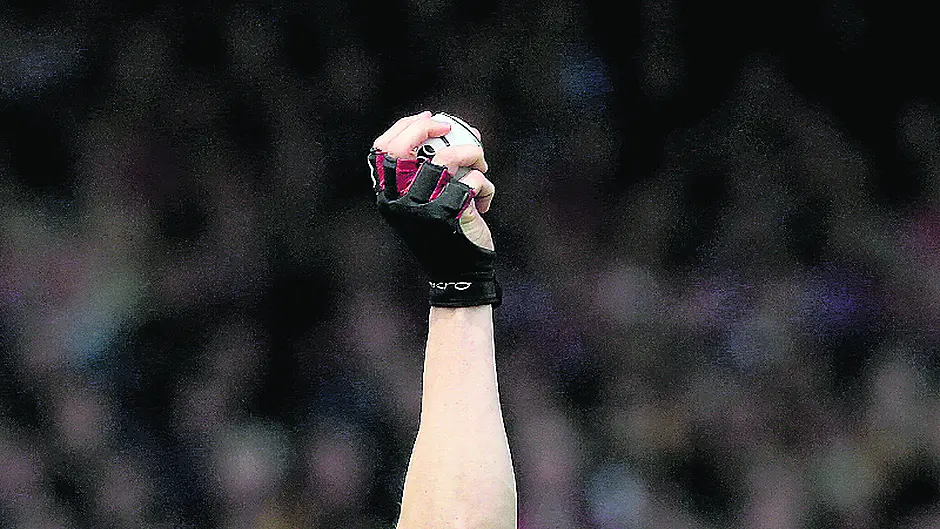Tom Lyons shares his thoughts on the GAA’s latest action plan for hurling
AM I the only person disillusioned by successive, fruitless plans from Croke Park to promote hurling?
Of course, all these plans are well-intentioned, but like everything coming from the GAA in recent years, the new three-year Action Plan for Hurling Development – launched earlier this month – is again heavily biased in favour of the elite: the inter-county players.
This is not surprising as the plan comes from Croke Park, which continually preaches putting the club first but does the very opposite.
The failure of Croke Park to deal with the many problems facing the ordinary club player, in comparison to the elite inter-county player, is creating a rift in the association which is only going to be widened by these new hurling plans.
First off, let’s deal with the main proposal in the plan, to introduce a new inter-county competition for U17 players. We all know that Croke Park is in favour of reducing the minor age from U18 to U17 and this is just a veiled attempt to introduce that move through the back door, in case it is defeated at Congress. We’re not saying it’s a bad idea to reduce the minor age to U17 but the clubs, and not Croke Park, should have the final say in that.
This new U17 competition is aimed at players who are not engaged in State exams in May and June, a laudable idea but what a pity it is aimed at the elite inter-county players again, because here in Cork, that competition already exists at minor club level for our non-exam players.
Involved
This new competition will cut across the Cork club competition because clubs will now be deprived of their best U17 players who will be involved with the Cork U17 team.
This will lead to a lessening of the standard in the Cork competition, totally against the aims of the new Plan.
If the GAA wanted to introduce a competition for non-exam U17 players to improve and promote hurling, it should have been done at the basic level, at club level, as is done here in Cork.
Once again the GAA is blatantly favouring the elite inter-county players as against the need to improve and promote hurling at grass-roots level. Like any plant, hurling will never grow and develop unless the roots are strong.
As regards changing the age of minor from U18 to U17, it may not be a bad suggestion as it would mean minor players not being caught up in State exams. However the proposal cannot be taken in isolation as you would then have to reduce the U21 grade to U20 because a four-year gap from U17 to U21 would see too many young players falling between the gaps and being lost to the game at a very vulnerable age.
Also, the main underage groups in the GAA are U12, U14 and U16. If minor is changed to U17, then those age-groups would also have to change, to U11, U13 and U15, keeping the two-year gap between each group. Otherwise the new U.17 group would decimate the present U16 grade, with an overload of games for the U16 players.
The other thinking behind a new U17 grade is to give the players more games, which should lead to a lessening in training sessions.
Everybody agrees that there are far too many training sessions in today’s GAA in ratio to matches, but to think a new grade will cut down on training sessions is surely flawed thinking. The idea is that there should only be one training session for every game in the new competition. That will never happen.
Over-zealous
Over-zealous mentors will see this as another All-Ireland to be won and will put unrealistic pressure on players as regards training. Guaranteed you can expect two or three training sessions each week, with no allowance being made for club activity.
The main goal of the plan is to increase the opportunities for people to play hurling and to maximise the standards. This would be achieved by providing more meaningful, age-appropriate games, by increasing the number of coaches and improving the quality of the coaching, by aligning all committees involved in promoting hurling, and by maximising innovation and technology in the game. Each section is called a ‘Pillar.’ In this plan all counties in Ireland are divided into three categories, Protect the Games counties, Grow the Game counties and Develop the Game counties.
The important project in Pillar 1 is the U17 competition and is aimed especially at B and C minor hurling teams. It’s called ‘The Celtic Challenge.’ It also includes reforming the Minor A intercounty championship.
Pillar 1 also includes plans to reform the U21 hurling grade at A, B and C levels, a strange proposal as Croke Park has already recommended the abolition of the U21 grade in football.
Finally, Pillar 1 introduces a new scheme called ‘Hurl with Me’, aimed at parents and children, especially in non-traditional areas. It is intended to pilot this scheme in some areas during the coming summer.
Pillar 2 deals mostly with coaching the coaches who will be involved in the ‘Celtic Challenge.’ Best Practice is the buzz-phrase in this section which also deals with coaching in general. The word ‘Academy’, again with a mind to the top talent, appears here, aping our rugby friends. A new idea is coaching ‘Roadshows’, which would reach out to roughly 400 coaches nation-wide.
Pillar 3 contains proposals to ensure the alignment of structures, personnel and projects in order to gain maximum results.
This initiative is not before time as we often see so many in the GAA pulling in opposite directions in a bid to achieve the same goal. The re-launch of the Mentoring Programme, successful a couple of years ago, is envisaged in this section. A review of all the funding put into promoting hurling, and how effective it is, is planned and the full use of all available facilities will be examined.
Pillar 4 concentrates on optimising the use of innovation and technology to improve the quality of the game. Extensive use of the internet would make Best Practice available to all coaches.
Standardised sliotar
We’re delighted to see that it is planned to introduce a standardised sliotar, with the sliotar core being examined. Maybe, just maybe we might see a sliotar that won’t travel 100 metres with a flick of the wrist.
Also included here is an examination of the ash hurley and its future availability due to the ash tree disease that is sweeping through Europe. A monthly blog is envisaged to raise the profile of hurling at club, county and provincial levels.
One has to praise the enthusiasm of the people involved in drawing up the three-year plan, and their sincerity in what they propose, but until somebody realises that it is the Saturday-morning foot-soldiers, who undertake the coaching of our beginners, the five and six-year olds, who really hold the key to the success of hurling, then we are still on the wrong road.
Until such time as that army is increased, properly supported and adequately appreciated, then hurling will always remain the property of a handful of counties in this country.
It’s amazing to realise that the GAA has had the game of hurling under its care since 1884, that’s all of 132 years, and we still have counties in Ireland that show no interest.
Somewhere along the road, we all lost the plot.
Here’s hoping the new Plan will, at the very least, put us on the right road to proper development of this great game.










